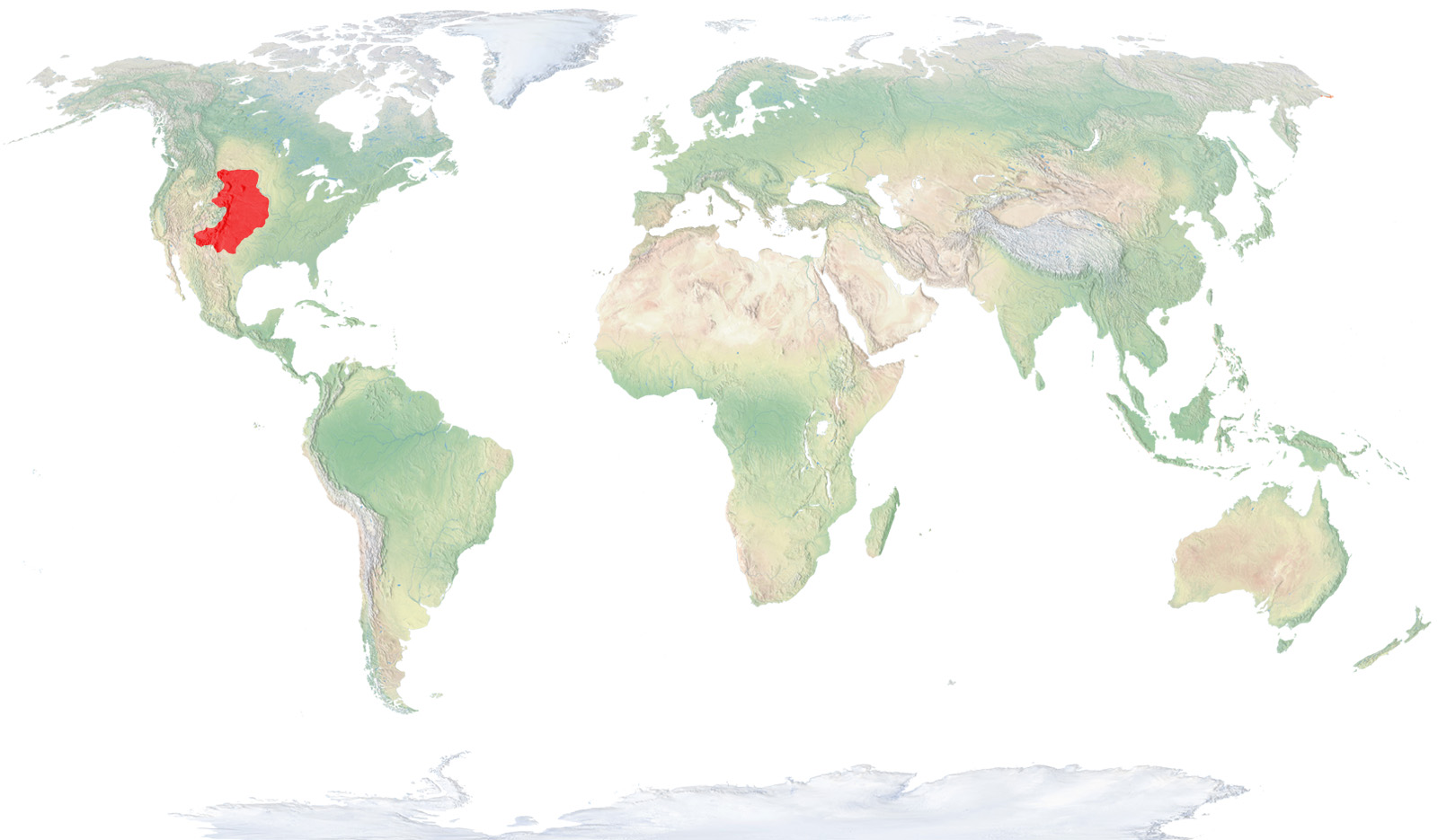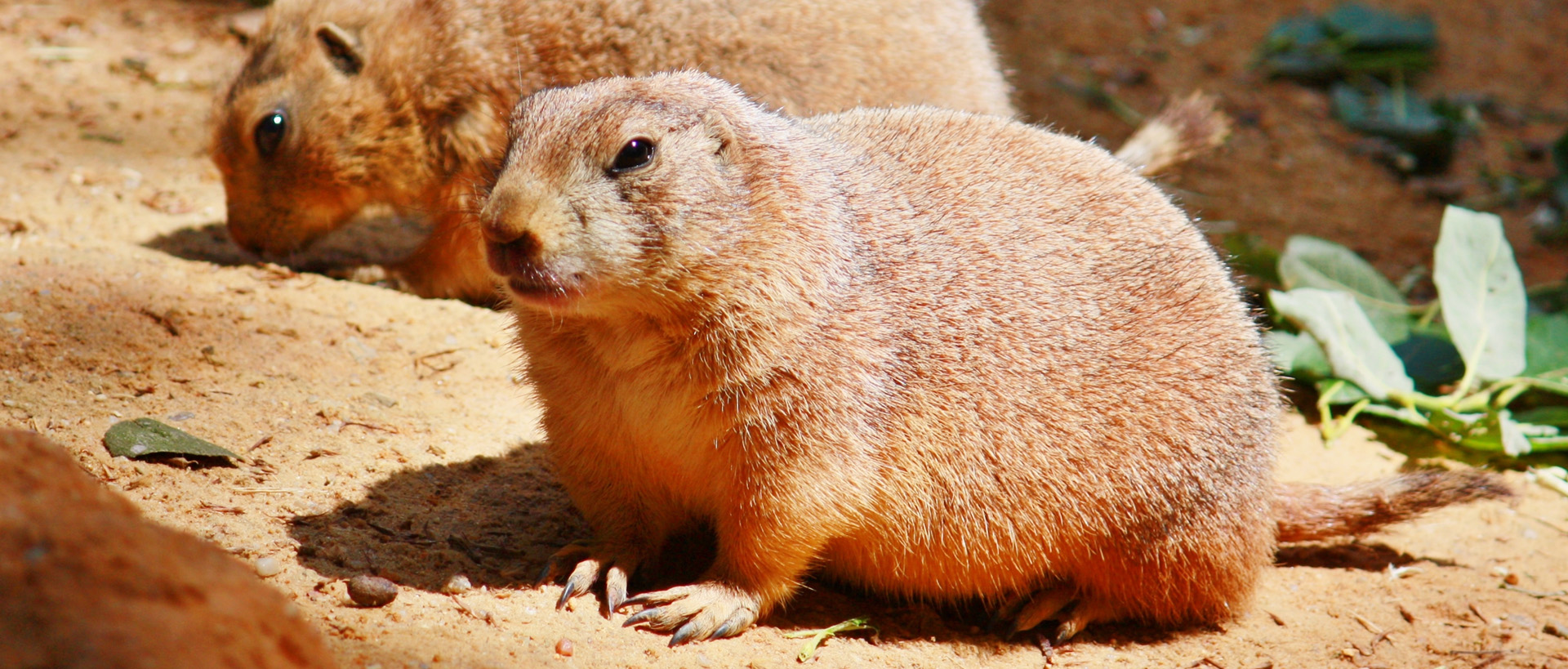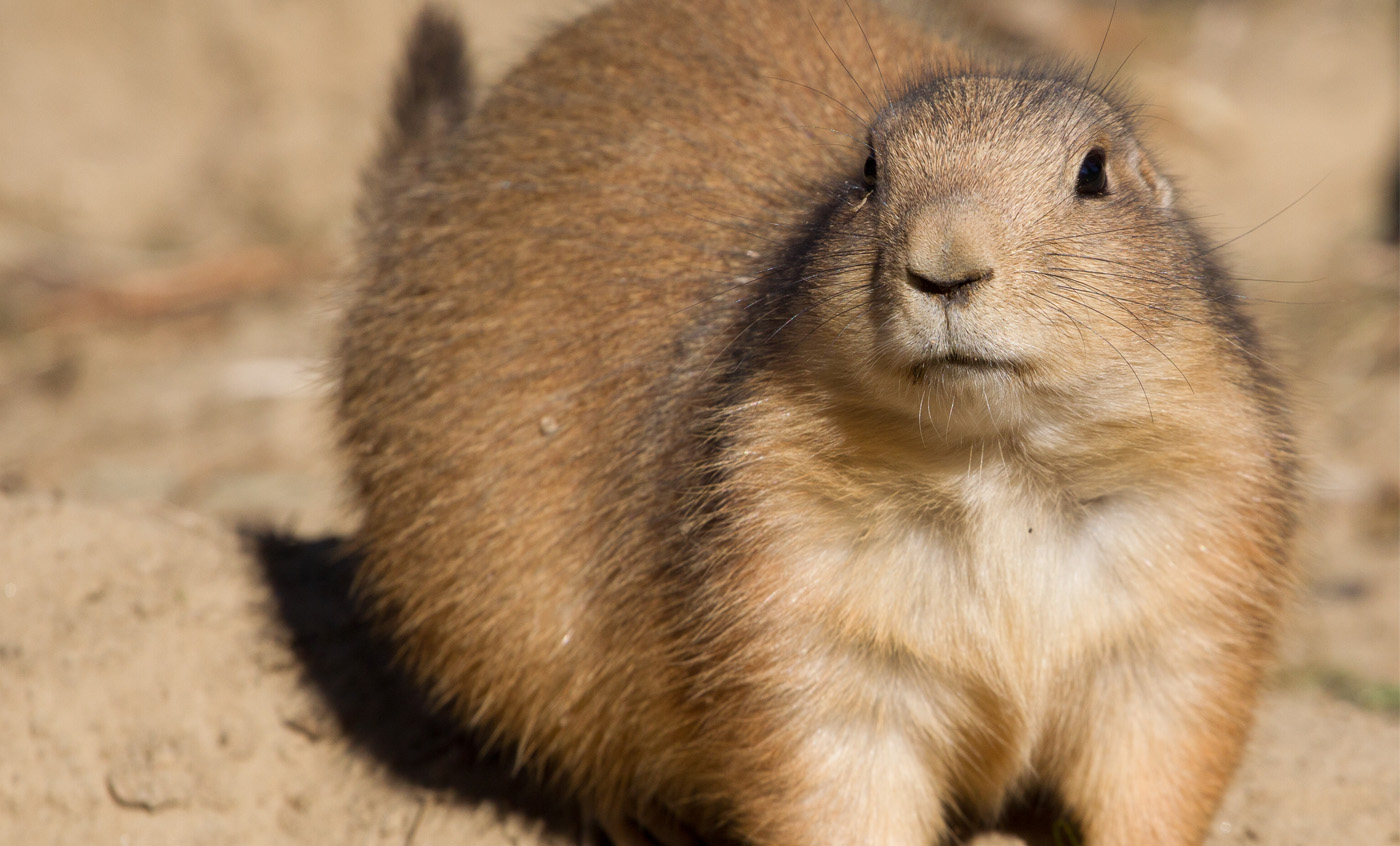Black-tailed prairie dog
This small terrestrial rodent, which belongs to the squirrel family, lives on the prairies and other flat open spaces in North America, from southern Canada to northern Mexico.
A gregarious animal, it forms large underground colonies that can be constructed by hundreds of thousands of individuals. The gestation period is from 33 to 38 days, with three to five babies born in each litter, although this number can be up to eight at times.
Natural habit
North America, from southern Canada to northern Mexico.

- Distribution / Resident
- Breeding
- Wintering
- Subspecies
Risk level
- Extint
- Extint in the wild
- Critically endangered
- In Danger
- Vulnerable
- Near threatened
- Minor concern
- Insufficient data
- Not evaluated
Taxonomy
Physical characteristics
Biology
Reproduction
Biology
Despite its appearance, the prairie dog is a small terrestrial rodent that belongs to the same family as the squirrel. Five different species are known, the most abundant of which we have at the Barcelona Zoo, the black-tailed prairie dog. Obviously, its main trait is having a tail with a black tip.
It lives on the prairies and other flat and open regions of North America.
They are herbivores that eat grass and other herbaceous plants that grow on the prairies, although they sporadically complement this diet with small invertebrates such as beetles, worms and locusts. They almost never drink, as they obtain the water they need directly from grasses.
The gestation period is around one month, and there can be between one and eight babies in each litter, normally though between three and five. They are born inside their underground caves, totally blind and hairless, measuring some seven cm and weighing from 10 to 15 grams. They are nursed by their mothers from 40 to 50 days.
They are essentially diurnal, although they are most active in the early morning and at dusk.
They are very gregarious, forming authentic underground cities that can be comprised of kilometres of corridors that connect the nests of different family clans, the basic unit of these animals. Family clans tend to be made up of one adult male, two to five adult females and a variable number of babies and young, generally from four to six.
The family coteries live in underground homes that can measure up to 5 metres deep and more than 30 metres long. They tend to have the entrance raised above the surface in little mounds of earth to prevent possible flooding during rainy season. The entrance to each dwelling in the coterie is located some five to six metres from its neighbours and, along with the surrounding land, represents its territory, which it defends against all other family groups.
Their social behaviour is complex and eye-catching. For example, when you see two animals that have left the burrow to feed, they approach each other while moving their tails until their noses touch, the famous prairie dog ‘kiss’, which in reality is a signal of recognition and greeting. However, beware, as if the fellow prairie dog is a stranger, it will be deemed a threat. However, normally communication with the other members of the coterie is done by loud cries emitted from the entry to the nest. The territorial cry, characteristic of each individual and made while sitting back on their rear legs with the snout pointing skyward, causes no reaction among the colony’s members, while the warning cry, even more powerful, makes all animals run for their homes. This cry of danger, which can be repeated up to 40 times per minute, is what led to the unsuitable name of prairie dog.
Prairie dog coteries can have thousands of individuals and, during historic periods, these numbers have skyrocketed into the millions. However, man has always considered this animal a great pest for agriculture and livestock, so that almost 98% of their original distribution has been eliminated by direct hunting, mass poisoning and by destroying their underground coteries. The result is that the only remaining large populations of this animal are found in parks and other protected regions.





